Latest News
- Kuwait-Jordan Durra Field Joint Statement Rejected By Iran
- GTD Cracks Down On Vehicle Noise Pollution In Sulaibiya
- Mystery Of Dead Fish At Shuwaikh Beach Sparks Urgent Action
- MEW To Complete Links With The Interior And Justice Ministries B...
- 8 Expats Jailed For Bribing An Officer To Obtain Driver's Licens...
- Weekend Weather Is Expected To Be Hot
- From Tomorrow, Traffic Diversion On Third Ring Road
- Ministry Of Health Refute Rumors On Non-availability Of Antibiot...
- Amir Of Kuwait And Jordan King Renew Commitment To Regional Secu...
- 37 Arrested With Narcotics And Firearms
- Outrage Over Candidate's Arrest
- Six Stores Shut Down In Jahra For Selling Fake Goods
Kuwait National Museum
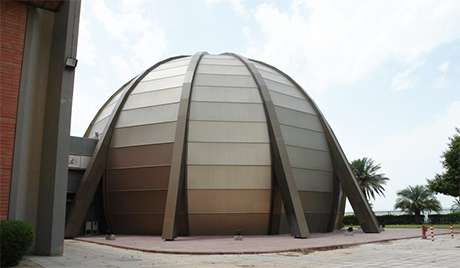
The Kuwait National Museum is the National Museuum of Kuwait, located in Kuwait City. It was established in 1983 and designed by architect ''MICHEL ECOHARD''The Kuwait National Museum is a true representation of the Kuwaiti heritage and it is located on the Arabian Gulf Street between the Seif Palace and National Assembly. Designed by French architect Michel Ecochard, visitors can enjoy this historical museum, which represent the Kuwaiti life in the past, their everyday activities, the rich trading history of Kuwait and its traditions. Museums are one of the best places that represent and preserve a country’s heritage and history. Through its galleries and exhibitions, it give people a chance to be connected with their country’s past. One of these museums is Kuwait National Museum on the Arabian Gulf Street next to the Seif Palace and Kuwait’s National Assembly.
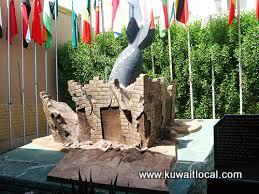
Indeed, there are two types of museums while the first displays artifacts found during an archaeological dig in Failika Island, terracotta and engraved tools, wooden doors of the past, group of cutters and blades from Neolithic age and flint stone, silver statues, 16 million old animal fossil, bronze coins from bronze period and Hellenistic period Therefore, for the visitors who are not very familiar with the full chronological and geographic spread of the Islamic world, a visit to Kuwait National Museum will be helpful.
The museum consists of five buildings built around a central garden; this is similar to the architectural plan of the vernacular Arab mud house which has a central courtyard. The National Museum also exhibits the wonderful art collection by the Al-Sabah dynasty.
How to go?
The museum is located in Kuwait City on the Arabian Gulf Street between the Seif Palace and the National Assembly (Parliament). There is Al Sadu house a few feet away, which faces the Gulf Street. Heading west, Take the Gulf Road (25th Street), after Al Maarri Street turn first left. The museum main gate is on the right.

History:
Although the museum was planned during early 60s by Michel Ecochard, it was opened to public in 1986 divided into four blocks: 3 for permanent exhibitions and the fourth for administrative offices and auditorium. The museum has a remarkable history and it was formerly the residence of the Kuwaiti royal Sabah family. The archaeological discoveries at Failaka created a requirement for a place to house these important finds and the Department of Antiquity and Museums bought the residence of the Sabah family in Kuwait City and turned it into the national museum. Despite the fact that the architectural project and the plans of the museum were ready in 60’s, actual construction was started only in 1981. Two of the four buildings were inaugurated on February 23, 1983; the planetarium was dedicated to the nation on February 16, 1986. One of the four blocks of the museum houses all offices, administrative wings and a lecture hall. The other three blocks houses the permanent artifacts.
The collection exhibited in the museum shows the visitor the richness of Kuwait history and its deep roots in history. The art collection of Al-Sabah family, the collection of dhows, and the archeological findings in Failaka reflect the complexity of Kuwait history. These collections are among the most important components of the museum that all Kuwaiti nation should know its past in order to be aware of their country’s glory.
The Kuwait National Museum is divided into:
- The Kuwait Heritage Museum
- Planetarium
- Archaeological Museum
- Boom Al Mouhallab
Kuwait Heritage Museum:
Kuwait heritage Museum is one of Kuwait National Museum galleries. This part of the museum highlights the importance of Kuwait history from the very first days of its founding. Through this exhibition, the visitor can see how old Kuwaitis survived the very harsh condition of Kuwait environment. Taking a journey through this exhibition is similar to taking a journey through Kuwait’s history.The first building has 2 rooms displaying very impressive archaeological artifacts found on Failaka Island. Failaka Island is 20km east of Kuwait city in the Persian Gulf.
Visitors will see many Bronze Age cauldrons, terracotta pots, coins, flasks and figurines on display from the Hellenistic period, which has been dug up on Failaka. Also they will see tools, vessels and tripods from the BronzeAge in addition to some attractive jewellery- necklaces, bracelets, rings, gem stones.
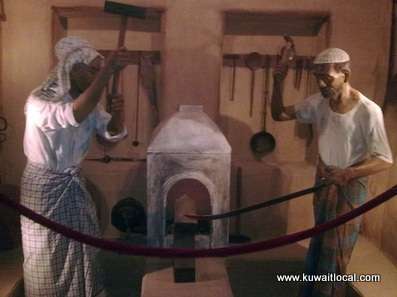
Apparently, Failaka Island was an important site from as early as the Bronze Age and was colonized by the Ancient Greeks in the fourth century BC. Alexander the Great founded a Greek colony in the island during 324/3 BC and called it 'Ikarus’. 16 million year old fossils are also displayed along with flint arrows, blades and cutters from the Neolithic age (5000- 8000 BC)
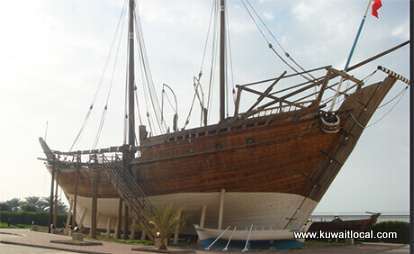
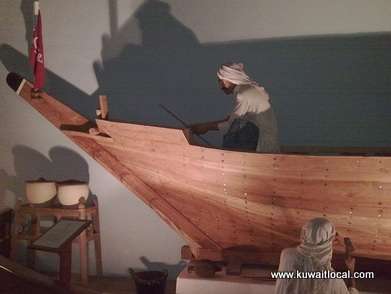
Visitors will see many Bronze Age cauldrons, terracotta pots, coins, flasks and figurines on display from the Hellenistic period, which has been dug up on Failaka. Also they will see tools, vessels and tripods from the BronzeAge in addition to some attractive jewellery- necklaces, bracelets, rings, gem stones.
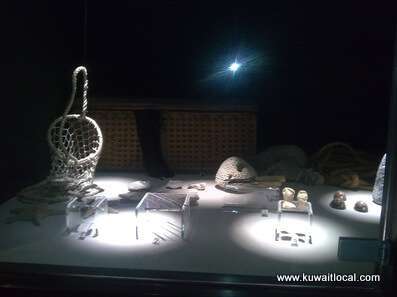
The heritage section is an absolutely dazzling life-size reconstruction of "Old Kuwait". This section houses a framework of an old souq and displays all the different facets of Kuwaiti life with life size replicas and models. First there is "Al Natur" (guard of the market) and his duty was the security and maintenance of the market. Then there is the Jew market (Al Bajajas) followed by a variety of traditional shops
Al Bourkhotaah - (originally Indian word) is the store that sells utensils and household items most of them imported from India.
Al kharaj - leather products mainly shoes of camel and sheep skin.
Al Khabooj- is where we can buy bread and oldest market in kuwait.
Al Tamoor- the Dates Market.
The Arms Market- different types of guns were sold.
Kuwait National Planetarium:
The planetarium was one of the first in the Gulf region and this was designed by Carl Zeiss. Inaugurated in 1986, the Kuwait National Planetarium has 15 meter of a horizontal dome installed with a map of the sky mainly the northern hemisphere surrounded by the 28 phases of the moon.
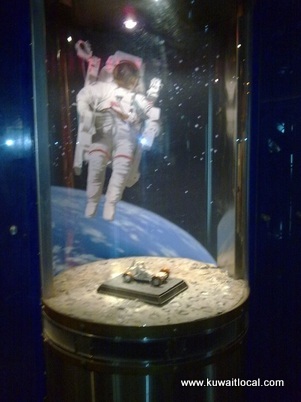
The dome portrays the sky with its 52 constellations and more than 550 radiant stars. Small models of planets orbiting the sun, space shuttles, compasses and also old telescopes are displayed for viewing on the ground floor of the dome.
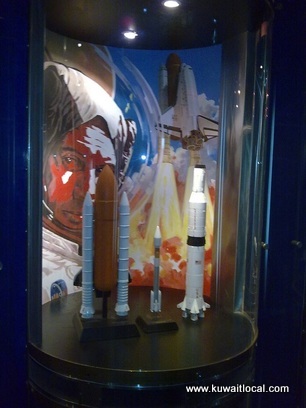
There is a semi-circular walkway with a mural on each side up to the sky dome. One shows the comparative size measurements from electron size particles up to the size of a human being and the other has universe and solar system.
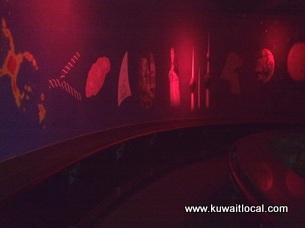
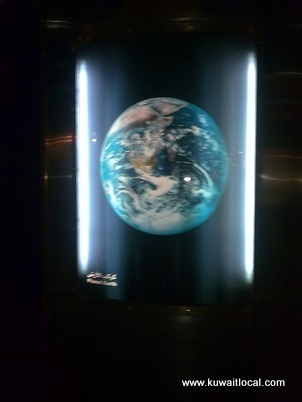
The sky dome show hall has shows which are screened in the mornings and afternoons and the shows in English are only at 12 noon on weekdays (and the museum is closed on Sundays).
In 2007, another major upgrade was done with full dome capabilities along with Uniview to facilitate up to date interactive voice-over in a 3D environment.
Archaeological Museum:
The Kuwait Archaeological Museum is another important component of the Kuwait National Museum. This exhibition displays artifacts found on archeological sights such as Failika island. This part of the museum opens the door into exploring the deep root of Kuwait since its prehistoric time.
enterance of the museum
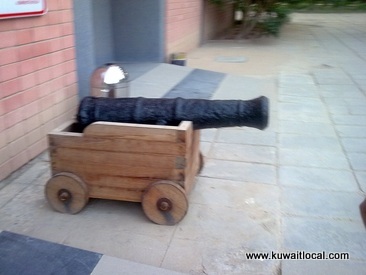
Different fossils and artifacts are from different historical areas such as the Hellenistic. All these artifacts are among Kuwait national heritage that all people in Kuwait have to be proud of.
Antique wooden carved doors
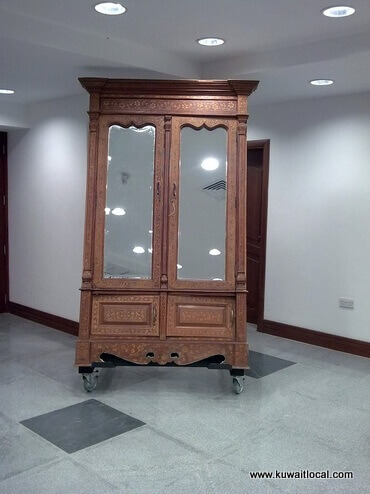
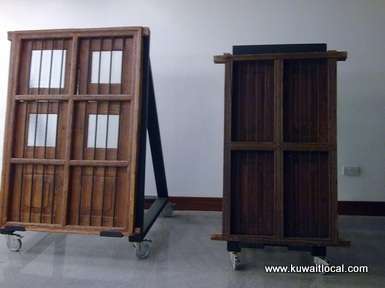
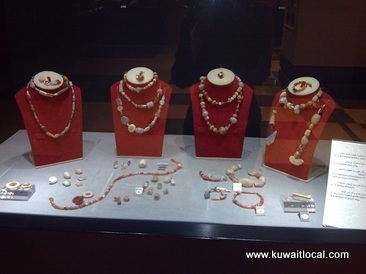
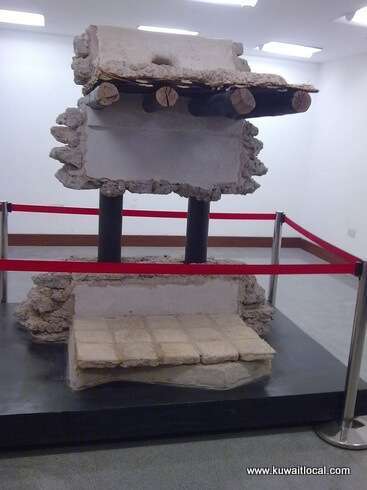
Boom Al-Muhallab:
Boom Al Muhallab is one of the major dhows that sailed during the history of Kuwait. It has an important place in Kuwaitis memory. It stands at the middle of the museum as a witness of all generations. it landed a the heart of the museum as a gift to the state after it set sail on its final trip in 1949.
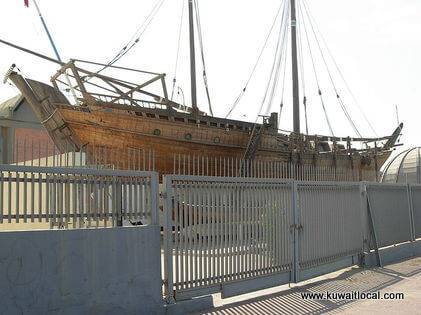
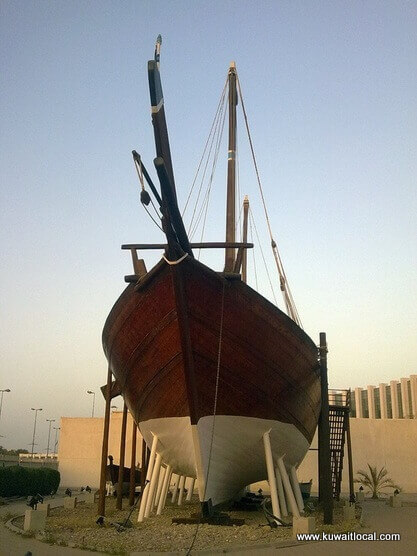
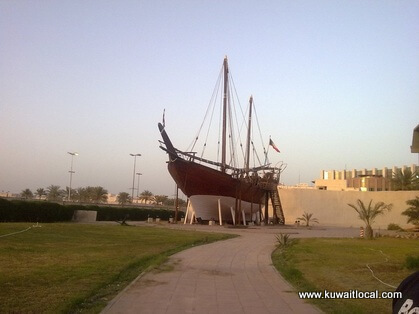
Visiting Hours
Monday to Saturday – 8.00am to 12.30am; 4.00ppm to 8.00pm
Friday – 4.00pm to 8.00pm.
Note: Friday & Saturday no morning shows
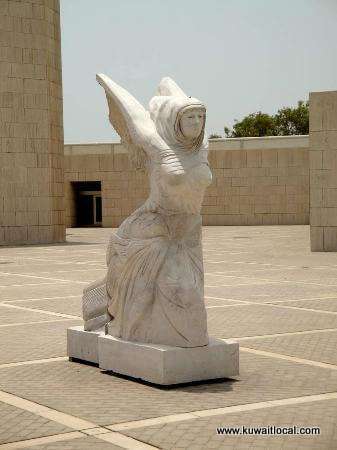
Enterance : Free
Photography : Allowed
Enterance : Free
Important Things when visiting museum:
1. Upon entering the museum, the guard takes visitors civil ID and gives them a visitor’s badge.
2. The entry to the museum is free.
3. There are a few antique's on display such as old camera's, gramophones, radio's, weapons, jewelry and clothing (men and women)
4. Another interesting feature of the museum is that an aluminum space frame covers some of the buildings and the inner garden creating an internal micro climate.
Trending News
-
 Kuwait Implements Home Biometrics Services Ahead O...
14 April 2024
Kuwait Implements Home Biometrics Services Ahead O...
14 April 2024 -
 Kuwait Airways Provides Update On Flight Schedule...
14 April 2024
Kuwait Airways Provides Update On Flight Schedule...
14 April 2024 -
 Kuwait Airways Introduces Convenient Home Luggage...
15 April 2024
Kuwait Airways Introduces Convenient Home Luggage...
15 April 2024 -
 Expat Residency Law Amended By Kuwait Ministerial...
20 April 2024
Expat Residency Law Amended By Kuwait Ministerial...
20 April 2024 -
 Two Expats Are Arrested For Stealing From Salmiya...
17 April 2024
Two Expats Are Arrested For Stealing From Salmiya...
17 April 2024 -
 Kuwait Airways Resumes Flights To Beirut And Oman...
15 April 2024
Kuwait Airways Resumes Flights To Beirut And Oman...
15 April 2024 -
 Temperature Increases Cause Electricity Load Index...
21 April 2024
Temperature Increases Cause Electricity Load Index...
21 April 2024 -
 Thief Returns Stolen Money With An Apology Letter...
15 April 2024
Thief Returns Stolen Money With An Apology Letter...
15 April 2024 -
 3 Expats Caught In Salmiya With 213 Bottles Of Loc...
23 April 2024
3 Expats Caught In Salmiya With 213 Bottles Of Loc...
23 April 2024 -
 Ministry Of Interior Denies Social Media Rumors Re...
13 April 2024
Ministry Of Interior Denies Social Media Rumors Re...
13 April 2024












Comments Post Comment